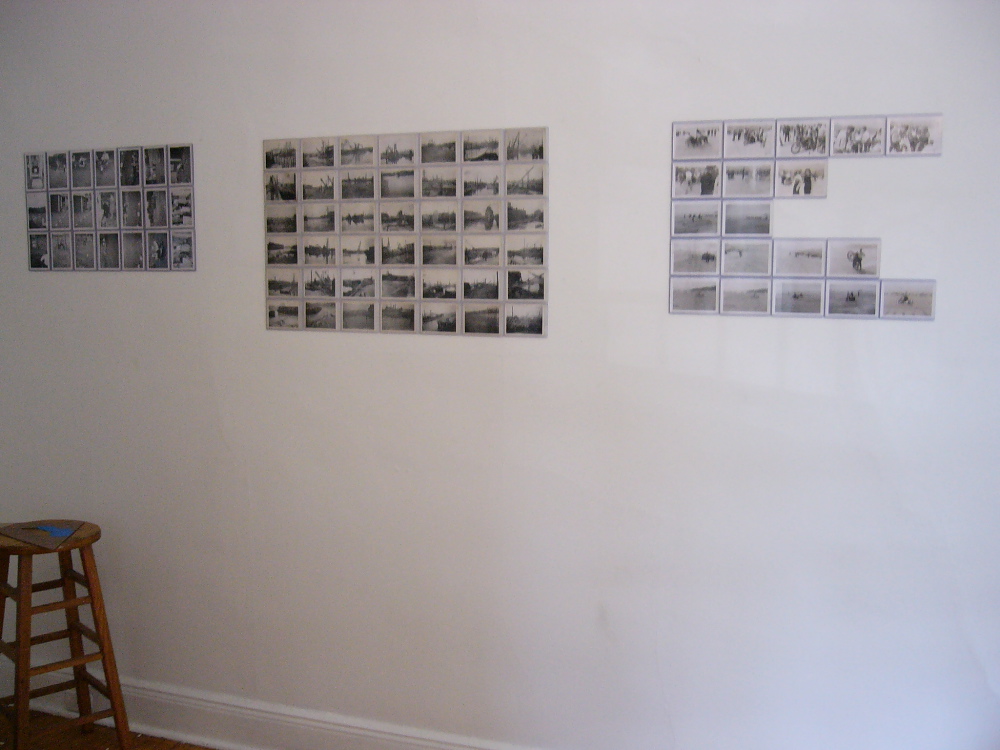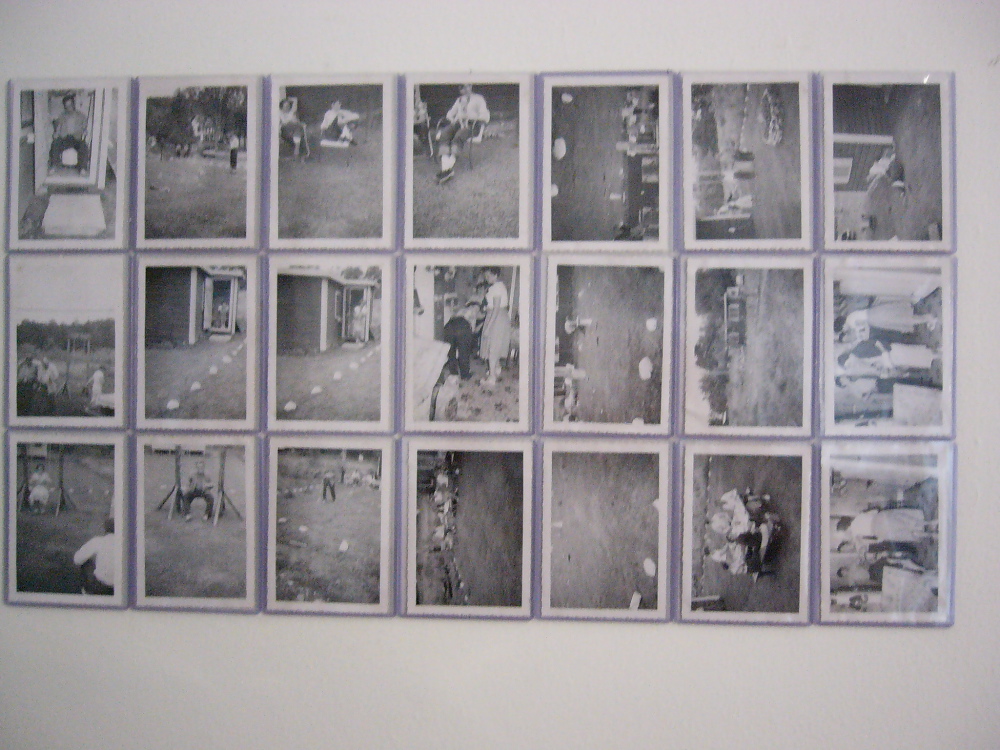Schwarz
View current page
...more recent posts

smash-em-up derby
no we're not on the lincoln park house tour
down by the boardwalk somewheres in asbury park
[....]
consider a question posed by artist Robert Irwin: How did art go from the hyper-realism of David to the total abstraction of Malevich in less than 100 years? Why was a gloriously perfected pictorial machine swapped for one that was unknown and unstable? The reasons for this are varied, complex, and buried in the psychic ruptures that took place in the 19th century. The question, however, contains part of the answer. As scientific knowledge increased, multiplicity replaced certainty, relativism grew, our experience of our world became more unknown and unstable, and the hierarchical way we pictured the world no longer seemed adequ ate or accurate. Single-point perspective and realism were originally devised to present a kind of double-positive: Things were rendered realistically in order to be known. This worked visual wonders for several hundred years. However, by the mid 19th century it became evident that there was a latent negative lurking in the double-positive: Things were bein g named but they weren't being known. A hole formed in the ozone of representation. Technique was only leading to more technique, perspectival space unraveled, and representation began to feel suppressive and deficient.
A visual analog for indefiniteness and instability had to be devised. A space for intuition was needed. Ab straction was one antidote. The wish was that abstraction would reverse the charge of the double-positive by presenting a double-negative: It would portray a world beyond naming. In this way a negative would be transformed into a positive. Although it led to astounding things, this premise has at least two glaring faults. First, understanding is an essentially useless measure for art. No one "understands" a Botticelli or any work of art. Second, there's ultimately no difference between abstraction and representation; both are simply depicting systems. Abstract space exists in representational art and vice versa.
From the start, many who touted abstraction made grandiose claims for it. Soon formalists took up residence in abstraction. Today tiresome, mostly male academics who can't get over Greenberg persist in draining the juice from nonobjective art. Yet abstraction is far sexier than these dogmatists imagine. Abstraction is a way of seeing that which cannot be seen. It was one of the more massive gambles in art history. Not even Picasso went fully abstract, believing that it implied the death of painting. Those who took the full leap into the nonobjective void were heroes.
[....]
Textiles magnate Donald Maharam, who recently bought Martha Stewart’s Gordon Bunshaft– designed house in East Hampton for about $9 million, wants to make it very clear that he’s sorry, but he has to tear it down. Because she wrecked it. The walls and floor are missing, plywood stands in for doors, the roof leaks, and there’s a five-foot-deep hole in the floor filled with sand that was supposed to be a basement but resembles, Maharam says, “a Bavarian bathhouse” instead. However, it’s on Georgica Pond. “It’s really not a house anymore,” he says. “It’s an exquisite piece of property. That’s why I bought it.” MoMA, which was willed the house by Bunshaft and then sold it to Stewart, refused to comment.another hamptons knockdown "what bastids"
Gangster Computer God Worldwide Secret Containment Policy
think dave emeory off the thorozine - via kenny g fmu blog
rat rod pick of the week
untitled (lawn party) 27 1/2" x 15 3/4", photographic prints, acrylic sleeves, double-sided foam tape - Bill Schwarz, May17th 2005
move over aric chen, curbed has started an alternate sub-blog called gutter seemingly dedicated to catty remarks on the subject of architecture and its folk. yeah i read this shit (and it is shit) looking for red meat. ill get back to you if i find anything good.
architecture-radio thom mayne talks
granta 89: the factory
from vz
harman kardon sound sticks II a sound solution
recovering architect
oxymoron or plain old moron
But the proposal put before you by city staff is an ambush containing all those destructive consequences, packaged very sneakily with visually tiresome, unimaginative and imitative luxury project towers. How weird, and how sad, that New York, which has demonstrated successes enlightening to so much of the world, seems unable to learn lessons it needs for itself. I will make two predictions with utter confidence. 1. If you follow the community’s plan you will harvest a success. 2. If you follow the proposal before you today, you will maybe enrich a few heedless and ignorant developers, but at the cost of an ugly and intractable mistake. Even the presumed beneficiaries of this misuse of governmental powers, the developers and financiers of luxury towers, may not benefit; misused environments are not good long-term economic bets.--jane jacobs on the williamsburg/greenpoint rezoning plan
Q As a relatively unknown architect based in Portland, Ore., how did you manage to win the competition for the redesign of 2 Columbus Circle in New York, which houses the Museum of Arts and Design?
from the nyt 2005 architecture magazine
potter george ohr
"trophy homes" suck
"monster homes" suck
"McMansions" suck
"starter castles" suck
"plywood palaces" suck
"bash and builds" suck
"bigfoots" suck
tiny houses rock walden rocks dave rocks
32 unknown pollocks discovered
Dia plans to move from its two spaces on West 22nd Street to 820 Washington Street, at Gansevoort Street. The new site is at the entrance to the High Line, the abandoned railway line 30 feet above the blocks between 10th and 11th Avenues, from Gansevoort Street to 34th Street, which is about to become a park with the help of $50.7 million in city money.
thanks to slema
the red hot jazz archive
from the red hot fmu message board

